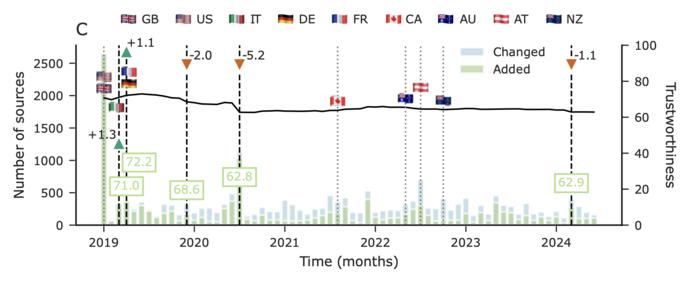
Covid-19 variant XEC may spread more easily than previous variants
Jarun Ontakrai/Shutterstock
A new covid-19 variant called XEC has started to spread worldwide, primarily in Europe. Early evidence indicates that it may transmit more easily than past variants, but public health experts say the new variant is very similar to past ones and the vaccines available work against it. Here is what we know about XEC so far.
What is the new covid-19 XEC variant?
XEC is a combination of two other SARS-CoV-2 variants known as KP.3.3 and KS.1.1. It formed when the two variants infected the same organism – such as an animal or person – simultaneously, allowing them to share genetic material.
XEC is a genetic offshoot of omicron, a highly transmissible variant that first emerged in South Africa in 2021. “You can think of these new variants as great-grandchildren or grandchildren of omicron,” says William Schaffner at Vanderbilt University Medical Center in Tennessee. This means it shares many of the same characteristics as other omicron subvariants, such as spreading easily and causing less severe disease than the earliest SARS-CoV-2 strains.
When and where was XEC identified?
XEC was first identified in August amongst covid-19 samples collected in Berlin two months earlier.
The earliest cases of the variant occurred in Italy in May. However, these samples weren’t uploaded to an international database that tracks SARS-CoV-2 variants, called the Global Initiative on Sharing All Influenza Data (GSAID) until September.
How many cases of XEC are there?
Data from GSAID indicates that more than 600 cases of XEC have been reported across 27 countries, including the UK, Germany, Canada and the US. However, “not all countries consistently report data to GSAID, so the XEC variant is likely to be present in more countries”, says Bhanu Bhatnagar at the World Health Organisation (WHO) Regional Office for Europe.
The variant is prevalent in Europe, where at least 13 countries have detected it, says Bhatnagar. So far, XEC constitutes about 8 per cent of all sequenced and reported samples from the continent this month, according to data from GSAID. By comparison, it made up about 4 per cent of samples in August. The most commonly sequenced variant in Europe is still KP.3.1.1 – also in the omicron family – at 48 per cent of all samples, says Bhatnagar.
XEC is most widespread in France, comprising roughly 21 per cent of sequenced covid-19 samples. It is also gaining traction in Germany and the UK, where it represents 15 per cent and 8 per cent of sequenced samples, respectively, says Francois Balloux at the University College London.
The new variant has also been detected in the US, where it makes up roughly 1 per cent of cases, says Balloux. However, XEC hasn’t appeared on the US Centers for Disease Control and Prevention’s (CDC) covid-19 variant tracker, which includes variants once they account for 1 per cent of all cases in a week.
What are the symptoms of XEC?
So far, XEC causes the same symptoms as other covid-19 variants such as fever, sore throat, cough and muscle aches and pains. “We will have our ears open to learn whether there are possibly some distinctive features, clinically,” says Schaffner. “We doubt it, but we’re always open to that.”
How dangerous is XEC?
XEC does not appear to be more dangerous or produce more severe disease than past covid-19 variants, says Schaffner. The WHO hasn’t designated it as a variant of concern, either. That is because it shares many of the same characteristics as other omicron subvariants, like causing more mild illness than earlier strains, says Schaffner.
Is XEC more transmissible?
It is too early to say whether XEC is more transmissible than other variants, says James Fielding at the WHO. Given that it has gained a foothold amongst other circulating variants, however, it may have an advantage that makes it spread more easily.
For instance, a preliminary analysis from Mike Honey, a data specialist in Australia, suggests that XEC will become the dominant variant in Europe and the UK in October. He predicts the same will occur in the US and Canada later that month or in November.
“How widely [spread] this particular strain will become, I think we just have to wait and see,” says Schaffner.
Do covid-19 vaccines still work against XEC?
The good news is that current covid-19 vaccines are expected to protect against XEC, says Schaffner. This is because updated versions target omicron subvariants.
The CDC recommends everyone 6 months or older receive an updated covid-19 booster if they haven’t done so this year. In the UK, updated vaccines are available to people 75 years and older, and those who live in senior care facilities or have a weakened immune system.
Ultimately, Schaffner says there is no reason to panic about XEC. “The virus is just getting going, but it appears to be following the same pattern [as past ones]” he says. “My response is: same old, same old.”
Topics:
























































